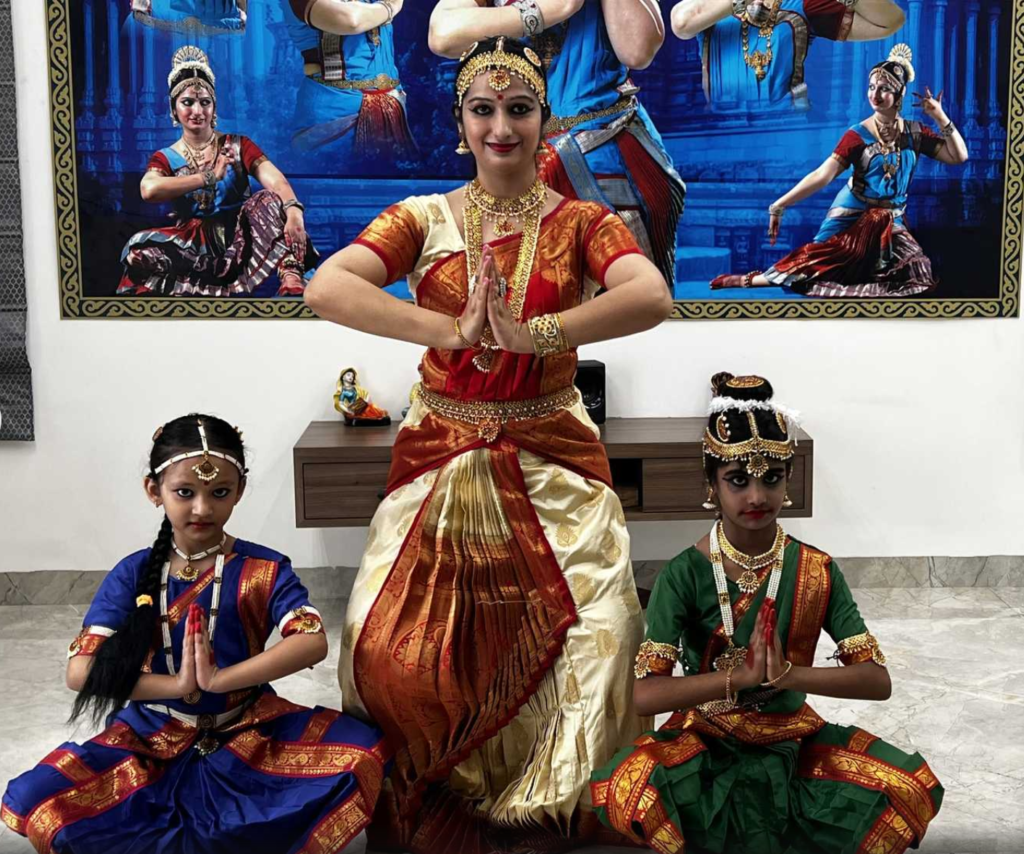
Kuchipudi, one of the classical dance forms originating from the Indian state of Andhra Pradesh, stands as a testament to the rich cultural heritage and artistic prowess of India. The Nrityangana Kuchipudi Dance Academy proudly presents an in-depth exploration of this exquisite dance form, delving into its unique elements and enchanting appeal.
Historical Background
Kuchipudi’s roots trace back to the village of Kuchipudi in Andhra Pradesh. Traditionally performed by male Brahmins known as Bhagavatulus, the dance-drama was an offering to the deities. Over time, it evolved to include female dancers, expanding its repertoire and reach. Kuchipudi is renowned for its blend of fast-paced movements and expressive gestures, encapsulating the essence of storytelling through dance.
Key Elements of Kuchipudi
1. Natya (Drama): At the heart of Kuchipudi lies natya, or dramatic storytelling. Each performance unfolds a narrative, often derived from Hindu epics like the Ramayana, Mahabharata, or Bhagavata Purana. The dancers embody various characters, bringing the stories to life with their expressive acting, known as abhinaya.
2. Nritta (Pure Dance): Nritta refers to the pure dance movements devoid of any interpretive gestures. It showcases the technical prowess of the dancer through intricate footwork, rhythmic patterns, and captivating sequences. The Tarangam, performed on the rim of a brass plate, is a hallmark of Kuchipudi nritta.
3. Nritya (Expressive Dance): Nritya combines elements of nritta with abhinaya to convey emotions and themes. Facial expressions, hand gestures (mudras), and subtle body language are employed to communicate the underlying rasa (emotion) of the piece. This element highlights the dancer’s ability to connect with the audience on an emotional level.
4. Abhinaya (Expression): Abhinaya is the art of expression and forms the soul of Kuchipudi. It encompasses angika (body movements), vachika (speech), aharya (costume), and satvika (mental state). The dancer’s eyes, eyebrows, and facial muscles are pivotal in conveying the nuanced emotions of the characters portrayed.
5. Music and Rhythm: Kuchipudi performances are accompanied by a rich tapestry of music, including vocal and instrumental compositions. The mridangam (percussion), violin, flute, and veena are commonly used instruments. The intricate tala (rhythm) patterns and melodic ragas create a symbiotic relationship between the dancer and the musicians, enhancing the overall aesthetic experience.
6. Costumes and Makeup: The elaborate costumes and makeup add a visual splendor to Kuchipudi. Traditional attire includes a colorful sari for female dancers, adorned with jewelry and a distinctive headdress. Male dancers wear dhoti and angavastra. Makeup accentuates the facial expressions, with bold eye lines and vibrant colors bringing the characters to life.
Significance and Legacy
Kuchipudi transcends mere performance art, serving as a vital cultural expression that preserves ancient traditions and spiritual values. It enjoys global recognition and continues to thrive through dedicated festivals and academies. The Nrityangana Kuchipudi Dance Academy is devoted to nurturing this classical dance form, ensuring its legacy is carried forward by inspiring new generations of dancers and enthusiasts with grace and passion.

